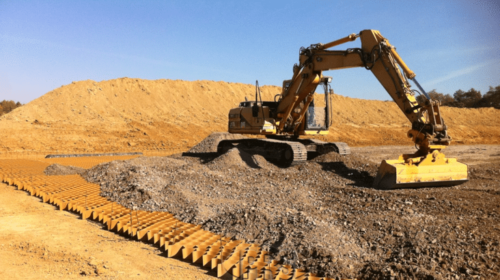Global Soil Stabilization Market to grow at 5.02% CAGR, which is anticipated to reach USD 36.13 billion by 2030.
CRI Report has released a report titled “Soil Stabilization Market – Analysis of Market Size, Share & Trends for 2019 – 2020 and Forecasts to 2030” which is anticipated to reach USD 36.13 billion by 2030. According to a study by CRI Report, the market is anticipated to portray a CAGR of 5.02% between 2020 and 2030. According to the report, the growth of the global demand for soil stabilization is being driven by increased building activities and infrastructure activities worldwide due to rapid urbanization. Many governments world widely invest in infrastructure activities, which is further anticipated to fuel the growth of the global stabilization market, to construct road networks, barriers, Ferrovial, and many other institutions such as hospitals and schools. The physical characteristics of soil, such as the soil texture and soil structure in agriculture play an important role, as they influence the soil’s ability to maintain water and nutrients. Soil stabilization aids in the modification of these properties as required.
The market report on global Soil Stabilization market includes in-depth insights as:
- The estimated value of the market was USD 24.85 billion in the year 2020.
- Region-wise, the market in Asia Pacific, which held the largest market share of XX.X% in the year 2020, emerged as a key market for the Soil Stabilization Market.
- Based on application, industrial emerged as a key segment in the global Soil Stabilization Market.
- Based on method, mechanical emerged as a key segment in the global Soil Stabilization Market
- Key players are likely to focus on product innovations and expansion through mergers to retain their positions in developed markets.
“Soil stabilization is the soil modification to improve its physical properties. Soil stabilization can enhance the shear strength of the soil or regulate the shrinking swelling of the soil and thus improve the load-bearing ability of the soil to support floors and foundations. On roads, parking lots, building sites, airports, and many other circumstances where sub-grounds are not appropriate for construction, soil stabilization may be used. A variety of subgrade materials, from vast clay to granular materials, can be processed by stabilization. A wide range of additives including lime, fly-ash, and Portland cement are used for this process.”, said a lead analyst at CRI Report.
Soil stabilization is a chemical, biological, physical, or combination process used to modify the soil nature as needed. This process increases the shear strength and physical properties of the soil. Soil stabilization is used for the building of airports, roads, projects for site growth, etc. It also improves rigidity and the ability to bear. The methods used for soil stabilization are commonly chemical and mechanical. For mechanical processes, combining, compacting or substitute methods are employed. Chemical stability uses compounds of chloride, fly ash, asphalt, or chemical blends.
Global Soil Stabilization market is segmented by method into Mechanical and Chemical. A large part of the global market was dominated by the mechanical method segment. The mechanical method includes multiple ground stabilization machines for improving soil intensity, such as compactors, rollers, and pavers. The mechanical method helps to combine the ground, which can be used in subgrades and base construction, correctly and regularly.
Key Players in the Market
- Some of the key players operating in the global Soil Stabilization market are Caterpillar (US), AB VOLVO (Sweden), FAYAT (France), WIRTGEN GROUP (Germany), CHARMEUSE (US), Global Road Technology (Australia), Soilworks (US), Graymont (Canada), SNF Holding (US), Aggrebind (US), IRRIDAN USA (US), and Altacrete (Canada), Other Prominent Players
Get Valuable Insights into Global Soil Stabilization Market
In the new report, CRI Report thrives to present an unbiased analysis of the global Soil Stabilization market that covers the historical demand data as well as the forecast figures for the period, i.e., 2021-2030. The study includes compelling insights into growth that is witnessed in the market. The market is segmented by application into Industrial, Non-agricultural, and Agricultural. By method, market is segmented into Mechanical and Chemical. Geographically, the market is segmented into North America, Latin America, Europe, Asia Pacific, and Middle East, and Africa.




